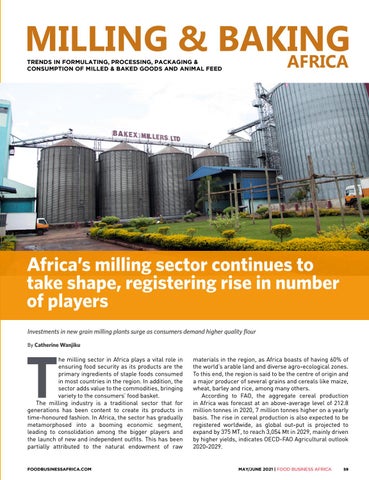TRENDS IN FORMULATING, PROCESSING, PACKAGING & CONSUMPTION OF MILLED & BAKED GOODS AND ANIMAL FEED
Africa’s milling sector continues to take shape, registering rise in number of players Investments in new grain milling plants surge as consumers demand higher quality flour
T
By Catherine Wanjiku
he milling sector in Africa plays a vital role in ensuring food security as its products are the primary ingredients of staple foods consumed in most countries in the region. In addition, the sector adds value to the commodities, bringing variety to the consumers’ food basket. The milling industry is a traditional sector that for generations has been content to create its products in time-honoured fashion. In Africa, the sector has gradually metamorphosed into a booming economic segment, leading to consolidation among the bigger players and the launch of new and independent outfits. This has been partially attributed to the natural endowment of raw
FOODBUSINESSAFRICA.COM
materials in the region, as Africa boasts of having 60% of the world’s arable land and diverse agro-ecological zones. To this end, the region is said to be the centre of origin and a major producer of several grains and cereals like maize, wheat, barley and rice, among many others. According to FAO, the aggregate cereal production in Africa was forecast at an above-average level of 212.8 million tonnes in 2020, 7 million tonnes higher on a yearly basis. The rise in cereal production is also expected to be registered worldwide, as global out-put is projected to expand by 375 MT, to reach 3,054 Mt in 2029, mainly driven by higher yields, indicates OECD-FAO Agricultural outlook 2020-2029.
MAY/JUNE 2021 | FOOD BUSINESS AFRICA
59






